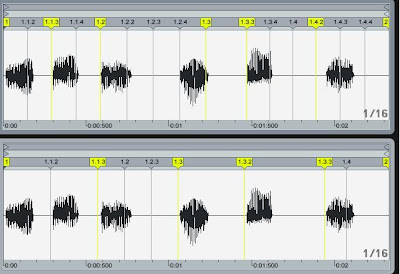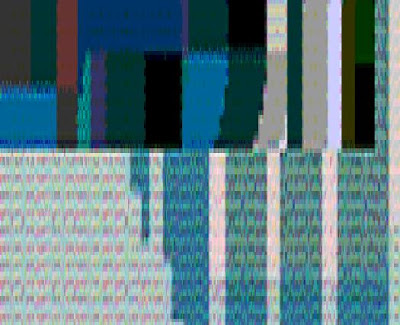Uncle Ben's Express. Some sort of instant rice product.
Marketed as a quick and easy gourmet please the discerning consumer style product.
Visually everything is quite nice and clean, nice apartment - i'd say the character's are meant to have a lot more $$$ than I do.
That said, the pace of the ad is quite fast - you
can cook gourmet style in 2 minutes.
So, tight editing between scenes, which means quick sound bites such as cream pouring, footsteps, which tell a sped up story.
The sounds initially setup the scene, with the focus on a sleeping man who hears a car door and keys jingling to realise his wife is home, quick shot of his wife (from above) to let
us the audience know his wife's home and has to come upstairs (which could take, oh maybe 2 minutes).
 uncle ben rice thingamy time line
uncle ben rice thingamy time line0.00 : background city murmur, car door, man grunt, key jingle, footsteps
0.03 murmur stops. product put down in microwave, music starts (funky hihats). microwave beeps then whirrs.
0.06 music really starts (funky everything), footsteps up the stairs
0.10 cream pouring
0.11 fish slicing
0.14 sauce bubbling in frying pan
0.15 microwave beeps ready
0.17 key open door
0.21 voice over : uncle ben blah blah blah is the best!!
music finishes
The ad is a bit cinematic with the initial city ambience (very quiet really) disappearing when all the action now takes place inside.
The sounds of food preparation are intermittently overlayed onto the music which makes them quite subtle at times - and an interesting choice in which sounds to use, slicing fish but not shallots.
The 'real' sounds disappear once the wife arrives, the voice over starts (quite relaxed after the rush of the scene editing), the voice over happens to end at an appropriately musical moment to bring the volume back up after the ducking, then the music finishes the add.
This ad features mainly characterisic sounds but added afterwards, the sauce bubbling actually sounds like something frying. Apart from the music and voice all sounds can be considered as diegetic, but hyper-real.
The other ad was at another end of an extreme.
Nice 50's light orchestral scenic music, relaxed and showing an unstressed life in the suburbs.
No sound happens except for the music and voice over, which is quite restrained given the potentials - a child on a bike gets hit by a car backing out of a driveway... and after listening to other ads with all sorts of whooshy noises whacked in all over the place.
The voice is also quite an unexcited voice, a serious (but not too serious) sounding woman.
With the visuals being an unbroken scene til the logo at the end,verall it gives the impression of another average day, and the average potential for danger - so we
must save our kids !!!
kids foundation time line
0.00 music starts
0.21 voice over starts
0.25 music stops
0.29 voice over stops
In this case there was no real interaction between the music and the visuals, the voice over kicked in at the appropriate moment to suggest that running kids over, while being statiscally an average event, is really not necessary.
All sounds were not diegetic.

Haines, Christian. Creative Computing week 01 lecture. University of Adelaide, 14 August 2007.








































